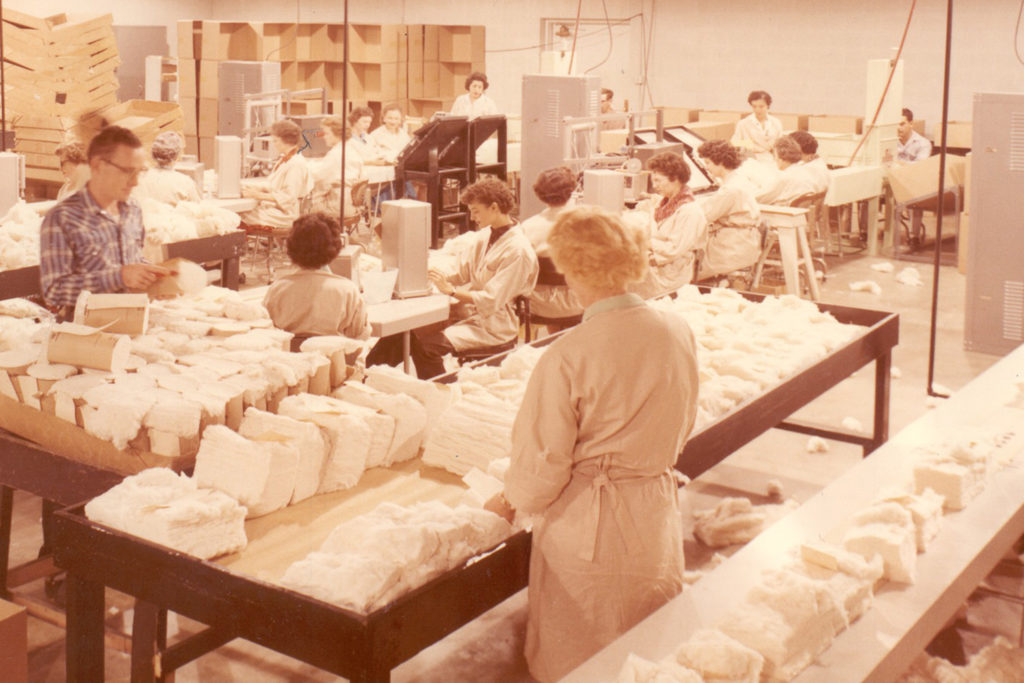PCCA’s Innovation that Became the World Standard
By John Johnson
 The marketability of Texas High Plains cotton was handicapped for decades by a reputation for inferior quality and delayed receipt of classing data from the U.S. Department of Agriculture. PCCA’s leaders knew they would have to overcome these two hurdles if West Texas cotton was to survive in the industry. It was a source of frustration during the co-op’s early years, but PCCA’s uncompromising appetite for innovation would prevail.
The marketability of Texas High Plains cotton was handicapped for decades by a reputation for inferior quality and delayed receipt of classing data from the U.S. Department of Agriculture. PCCA’s leaders knew they would have to overcome these two hurdles if West Texas cotton was to survive in the industry. It was a source of frustration during the co-op’s early years, but PCCA’s uncompromising appetite for innovation would prevail.
Frustrations first surfaced in the 1920s when cotton merchants could not agree on uniform terminology to describe the quality characteristics of cotton, creating much confusion in the marketplace. In the following decade, the merchants asked USDA to establish grading standards. In response to the Great Depression, Congress created price support pro- grams for agricultural commodities and stipulated cotton would have to be graded by USDA. The department’s hand-classing system would exist for the next 50 years.
The Solution
PCCA’s Board of Directors and management believed the system of measuring cotton fiber quality needed to be refined to more accurately establish the value of their grower-owners’ cotton. They also knew the system needed to be faster and less expensive.
In 1960, PCCA used a colorimeter to conduct exhaustive research on cotton samples collected at the compress, and the results were satisfactory. The co-op also purchased a used Recordax machine to photograph the samples to measure leaf content.
During their board meeting on June 28, 1960, PCCA General Manager Dan Davis recommended and the board of directors approved the allocation of $70,000 to purchase additional equipment and hire skilled cotton classers to staff the co-op’s new fiber testing lab. Davis also announced staff members were looking at using IBM punch cards to record color, leaf content, and staple length to further facilitate PCCA’s marketing efforts. By the end of 1960, the lab was processing 8,500 samples daily, enabling the co-op to market cotton more effectively and efficiently.
The New Standard
Later that decade, PCCA began working with a private company, Motion Control, to further advance the use of instruments in classing cotton and replace the system employed by USDA. Another goal of the joint effort was to add measurements for fiber strength and uniformity. Shortly after, PCCA became the first company to purchase and use a High Volume Instrument (HVI) line.
The HVI system soon proved High Plains cotton fiber benefited from improved varieties and better farming practices. It was not as short-staple or weak as textile mill executives and cotton industry representatives previously believed. USDA personnel also realized the potential for HVI to improve its cotton classing system.
The U.S. Secretary of Agriculture subsequently established an industry advisory committee to study the feasibility of HVI and make any recommendations. The committee was comprised of representatives from six segments of the cotton industry. Still, before their first meeting, USDA was approached by growers, ginners, and other leaders who asked the department to bring HVI classification to its Lamesa classing office.
Thus, the Lamesa classing office in 1980 became the first to issue fiber values based on HVI results. The department’s Lubbock classing office followed suit in 1982. Eventually, USDA converted all classing offices to the HVI system, and premiums for fiber strength were incorporated into the cotton loan schedules in 1991. Today, HVI data is accepted by the cotton and textile industries worldwide, and the system is used to class every bale of U.S. cotton.


